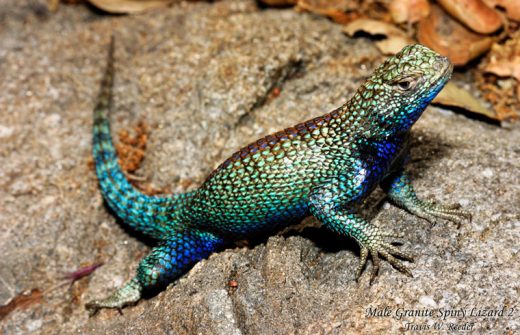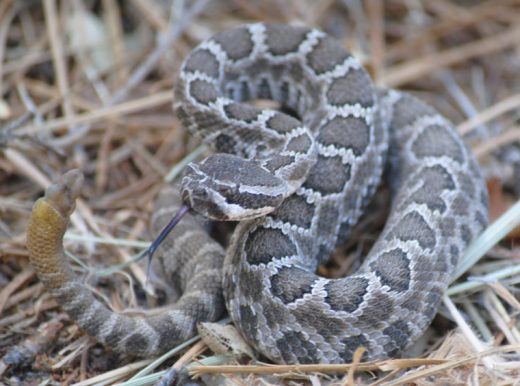
A steady diet of lizards may explain why the Southern Pacific rattlesnake species in this area has such a highly toxic venom, said a local expert.
Dr. William Hayes, professor of biology at Loma Linda University, said research in the San Jacinto, San Gabriel and San Bernardino mountains show that the snake’s venom is unusually more toxic in the San Jacintos, and its primary diet of lizards, especially one in particular, might be a contributing factor.
“We’ve studied the fecal samples of the snake to identify a higher percentage of lizards than others of this species,” he said. “The San Jacinto [Mountains] are the only place we’ve seen this type of venom … A bigger species of lizard, the Granite Spiny lizard, has a larger population distribution [here] and what might be causing that unusual venom.”
As to his ongoing research of the Southern Pacific rattlesnake, he said, “There’s a lot more we don’t know than we know.”
He also said the Southern Pacific is the most common snake in these mountains with gopher snakes being second. Snakes are weather-dependent, and with a fairly cool spring and now a hot summer, it is not unique that Better Wildlife Control owner Tracy Phillipi is locating so many on private land in Idyllwild-Pine Cove this season, he said.
Phillipi claimed last week to have caught 68 since March 20.
“They’re going to mate in spring and fall,” he said. He reminded everyone, as he has done in past Town Crier articles, that the Southern Pacific rattlesnake is not aggressive. “They’re more afraid of us than we are of them,” he said. “We don’t need to be afraid of them.”
He said 80 percent of the bites are to males and 45 percent are “because humans deliberately messed with the snake. A minimum of 20 percent involve alcohol or other chemical influence.”












We used to say that there are two chemicals that rattlesnakes are attracted to…alcohol and testosterone because the majority of snake bite victims entering the hospital were inebriated males.